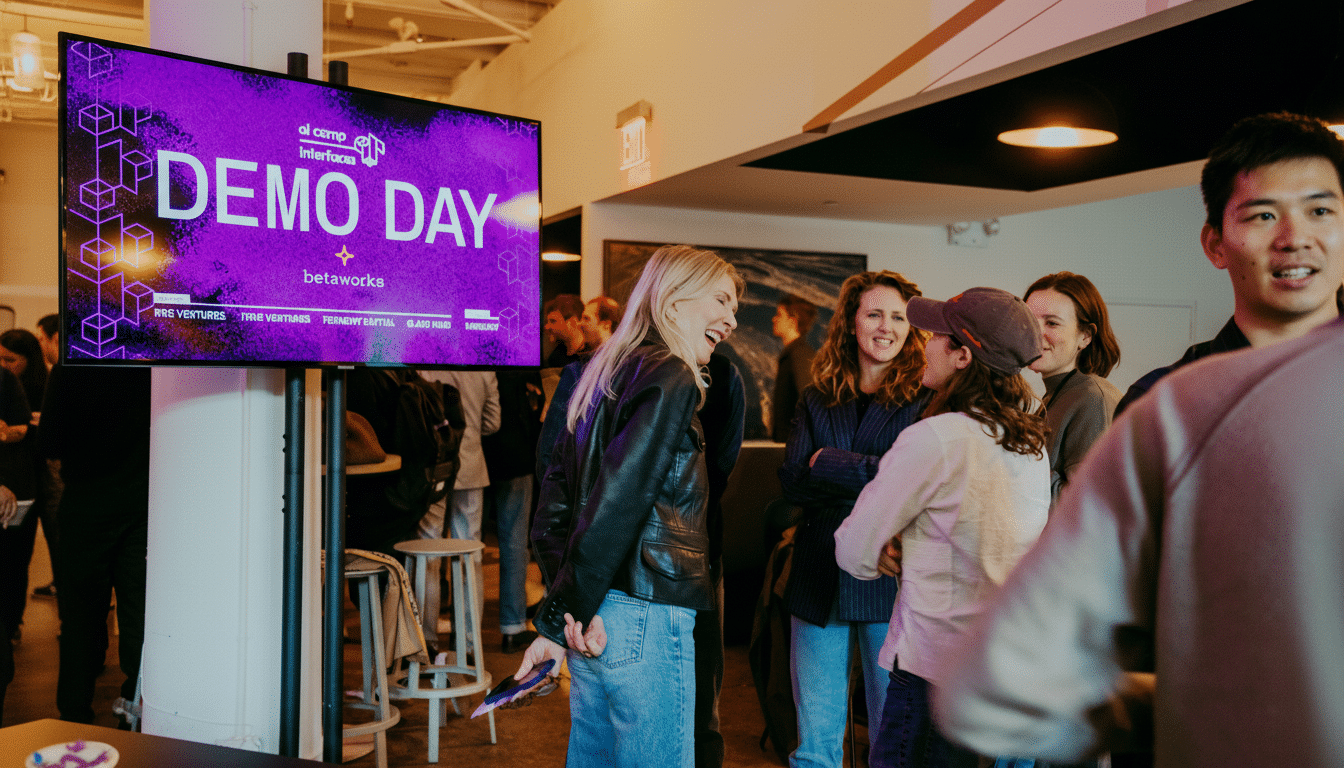Today, Betaworks has lifted the curtain on 10 new startups to finish its Camp accelerator, a 13-week residency that’s often onto interface shifts before they hit the mainstream. This edition of the cohort focuses on “Interfaces,” featuring teams that are rethinking how humans touch and steer A.I., beyond merely what models can do. It’s a familiar wager for the studio behind early antecedents like Hugging Face, with an emphasis on products that make advanced tech usable, humane and habit-forming.
Inside the New Betaworks Camp Cohort on Interfaces
Camp is twice a year, and it takes small founding teams through an intense build cycle with a public Demo Day on the last day. The focus this time is intentionally narrow: how interfaces influence trust, understanding and control in AI-powered tools. That framing is in line with broader industry momentum as multimodal systems, voice-first agents and ambient computing begin to replace the old app-and-tab mental model.

At Stanford HAI and at the Nielsen Norman Group, researchers and practitioners have highlighted how choices in interface design directly affect model output as well as user confidence. This cohort is a product of that thinking, ranging from scent-based memories and no-app computers to EEG-driven communication and creator commerce. Here is a closer look at the 10 teams.
The 10 Startups Changing What We Touch in AI
- Nora — Founded by Sid Banothu, this is a browser extension that records shopping habits in order to provide insight into what people are buying, how often and why. Rather than sprinting after coupons, Nora plays more toward behavioral visibility and control, by which consumers get a better handle on the patterns that move their carts over time.
- Primitive — A web app where you speak your messy ideas and it turns them into structured tasks or to-dos, made by Kasey Klines. It integrates with Notion and calendars to automatically funnel what you’ve captured into your existing workflows, no more sorting thoughts by hand.
- Patina — Founders Sean Raspet and Laura Sisson are building “scent photographs” with the help of olfactory science and machine learning. Patina consists of a combination of methods such as protein folding simulation, modeling scent receptors and graph neural networks to encode then recreate complex olfactory experiences in our minds as long-lasting, shareable memories.
- My Place by Orange (led by Helen Huang) — My Place is a game platform that simulates everyday human life, with credible and real-world logic. Think less let’s-get-away-ism and more space for practicing decisions and routines, social dynamics that reflect the way we actually live.
- Putty — Still operating in stealth, founder Kevin Chang is experimenting with memory systems and ambient interfaces that flex with life’s irregular rhythm. Betaworks invested in Putty based on its thesis: tools need to mold themselves to attention, not force it.
- Telepath — A computer, with AI in its guts and no traditional apps, developed by Stephen Hood, Josh Whiting and Rupert Manfredi. Telepath is a vision, a post-icon world where intent and conversation and context displace launchers and tiles and tabs.
- Feather — A practical digital assistant designed by ShaoBo Zhang and Marco Yu that does multistep workflows you’d rather not, like apartment hunting. Feather’s commitment is not smarter search; it’s hands-off execution that takes a task from intent to outcome.
- Nubrain — Priyanka Jain and Ingo Marquardt are the co-founders of Nubrain, which translates neural activity into speech, text, and images based on EEG data. It’s the nascent land of brain–computer interfaces, with both immediate assistive potential and longer-term creative implications.
- Presq — Created by Adam Saleh, Steve Burstyn and Mikey Robins, Presq allows influencers to upload data in order to produce prompts that lead to manufacturable footwear. The team aims to expand into eyewear and home products, in effect turning creator identity into production-ready consumer goods.
- Intension — Developed by Conor Sanchez-O’Shea and Gabriel Duemichen. This extension aims to help people focus more effectively while working on their desktop by hiding the distractions on their screens, tracking attention levels, and visualizing individual workflow patterns. It’s an interface for less choice, but more progress.
Why This Cohort Matters for Human-AI Interfaces
Interface-first startups often punch above their weight because they turn raw capability into repeatable behavior. Other alumni are illustrative: Hugging Face began the open AI development movement by making deep models accessible and collaborative, as much a product decision as a research accomplishment.
Industry analysts consistently note that adoption is as much about trust, transparency and control — not just accuracy. McKinsey and others have observed that those productivity gains appear when A.I. is embedded in everyday flows, not bolted on. This class embraces that truth — speaking, smelling, looking and concentrating are the new inputs.

What To Watch Next as These Interfaces Launch
How they achieve traction will vary for these concepts. Telepath will have to convince us that a no-app paradigm is superior to the muscle memory of decades. Primitive and Feather will be judged by how much busywork gets burned away, not on the novelty of their flames. You have to feel Intension will make a notable positive difference in your focus, not that it is being forced.
Two teams face distinctive guardrails. Nubrain’s EEG translation raises obvious questions of privacy and consent; compliance with nascent neurotech standards as developed by groups such as IEEE and policy guidance sleuthed out from bioethics researchers will be crucial. Presq will have to prove that creator-led manufacturing is scalable in practice, beyond one-off drops, into proper supply chains.
If Betaworks is right, adoption will occur where interfaces make AI feel less like a model and more like a medium. From scent memories to ambient computers, this group is betting that the next wave of breakthroughs are going to be felt at the interface where humans touch machines.

